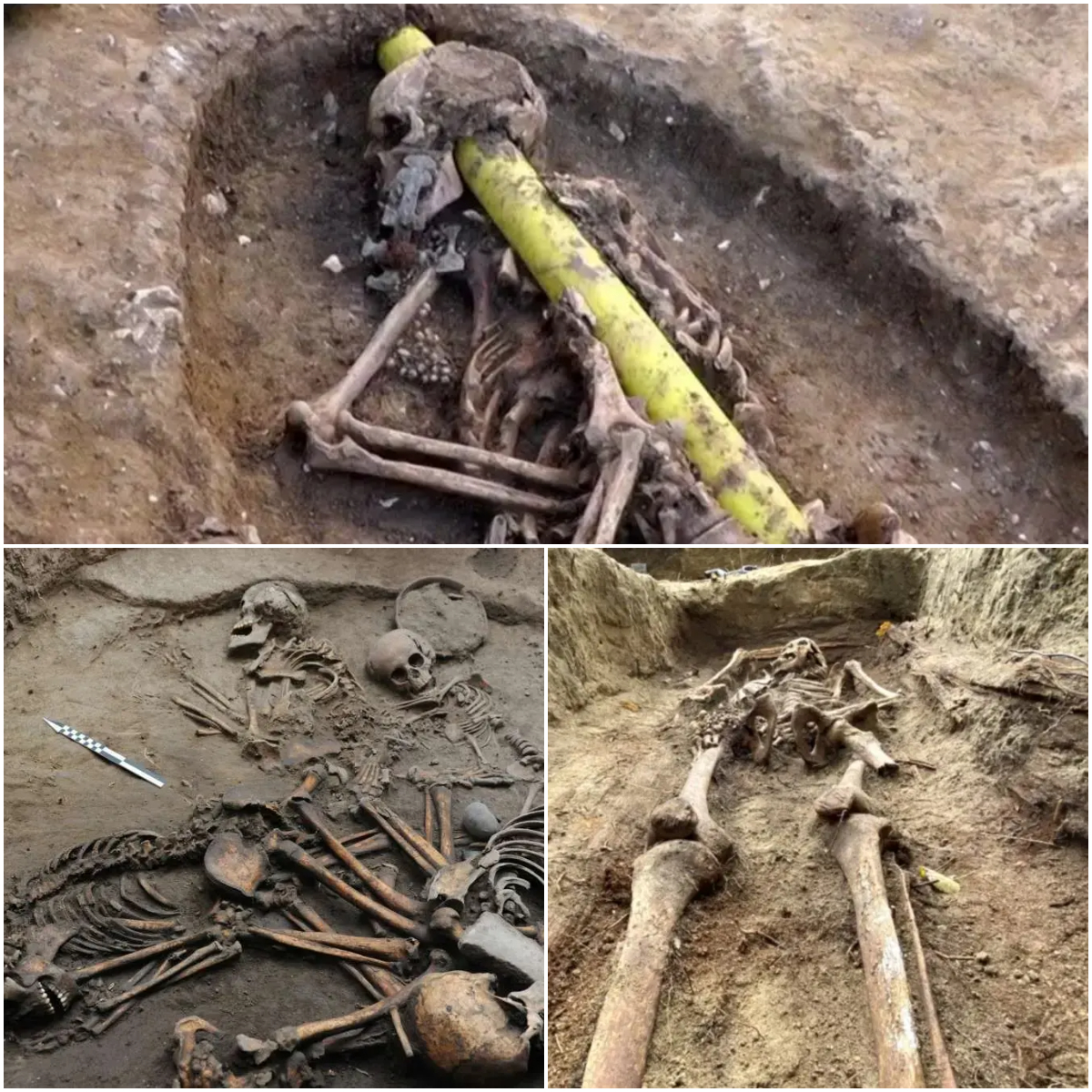Anglo-Saxon cemeteries have always been a historical treasure trove of unsolved mysteries. But recently, archaeologists have discovered one of the strangest phenomena ever excavated in Europe: a human skeleton pierced from below to the head with a precious metal bar – a real gold bar.
The question is: Why is there a gold bar pierced through the body of a dead person? Is this a burial ritual, a form of torture or an ancient spiritual ritual? Let’s explore all aspects in the article below.

1. Shocking Discovery From Anglo-Saxon Cemetery
The excavation took place at an Anglo-Saxon cemetery in southern England. While surveying ancient graves dating back to the 6th-7th centuries AD, the archaeological team unexpectedly discovered a human skeleton lying face down, with a precious metal bar piercing from the bottom of the pelvis to the top of the skull.
After chemical analysis, experts confirmed: it was a pure gold bar.
2. Gold Bar Piercing the Body – What Does It Mean?
The use of precious metals in burial rituals is not too rare. However, the way it is used here is completely unusual.
Some hypotheses have been put forward:
Exorcism ritual: The Anglo-Saxons once believed that bad spirits could return if they were not “pinned” to the ground. The gold bar could be a way to “lock the soul.”
Postmortem punishment: This could be a form of “punishment” for traitors, magicians or those who broke taboos. By using gold – a symbol of power – the living send a message that: power will still control the dead.
Special sacrifice: It is possible that this is a form of sacrifice to the gods – where gold represents a sacred offering.

3. The Mystery of the Deceased
Based on DNA and bone analysis, the deceased was a male, around 30–40 years old, with signs of having lived in the aristocracy. Some of the buried objects – such as weapons, necklaces, and decorative items – suggest that he was not a commoner.
The presence of gold further supports the theory that this person may have been an important figure or was severely condemned by his position.
4. What We Know About Anglo-Saxon Culture
The Anglo-Saxons had a diverse belief system, with a mix of pagan beliefs and Christian influences. They believed in spirits, demons, and exorcism rituals. Some graves have been found with bodies buried upside down, stakes driven through the heart, or with their hands and feet bound – as a way to “prevent the soul from returning”.

However, the use of gold to pierce the body is unheard of.
5. The Unanswered Question
Researchers are still trying to decipher the true meaning of this discovery. Is it evidence of a forgotten ritual, or is it an isolated event with a personal or political significance?

Either way, the discovery opens a new door to a deeper understanding of the thinking, beliefs and rituals of the ancient Anglo-Saxons.
The discovery of a skeleton pierced by a gold bar in an Anglo-Saxon cemetery is not only a unique archaeological phenomenon, but also a reminder that history still holds countless untold mysteries.
By combining archaeology, science and boundless curiosity, we are gradually uncovering the secrets of a past where gold was not only a source of wealth, but also a symbol of power, faith and fear.
